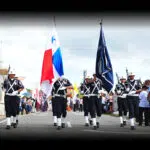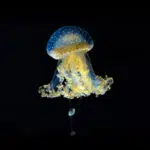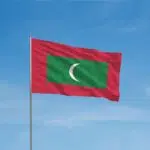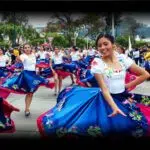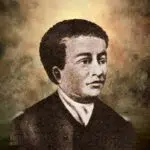Ecuador celebrates the Independence of Cuenca, a national holiday, every November 3. It commemorates the day the city of Cuenca declared its independence in 1820. With the third-largest population, Cuenca was a significant colonial city that proclaimed its independence from Spanish authority before the rest of the nation, with Guayaquil and other cities following its lead. In the end, Cuenca merged with Guayaquil and Quito to become the current state of Ecuador. During the Independence of Cuenca celebrations, you may experience the city’s colorful parades, dancing, and partying.
History of Independence of Cuenca
Cuenca, officially Santa Ana de los Cuatro Ríos de Cuenca, is the largest and capital city of Ecuador’s Azuay Province. It was formerly known as Guapondeleg, a Cañari town established around 500 A.D. When the Cañari were defeated around the 1470s, the Inca ruler Tupac Yupanqui ordered the establishment of Pumapungo, “the gateway of the Puma,” which supposedly rivaled the splendor of Cuzco, the Inca capital, and renamed the city Tomebamba. Spanish historians recorded tales of golden temples and similar wonders, but Spaniards only found the mythical city’s ruins.Tomebamba was scarcely populated until the 1550s after it was deserted by the Cañari and Incas. Some speculate that it could be the fabled city of gold, which the Spanish referred to as “El Dorado,” because of the destruction left by natives before the Spanish arrived. When the locals learned of the Spanish conquests, they believed El Dorado had been set on fire.On April 12, 1557, Gil Ramírez Dávalos, a Spanish explorer, laid the groundwork for the Spanish settlement in Cuenca. It was named after Cuenca, Spain, the hometown of then Viceroy of Peru Andrés Hurtado de Mendoza. Cuenca was established decades after the founding of other significant Spanish colonies in the area, including Quito in 1534, Guayaquil in 1538, and Loja in 1548. Throughout the colonial period, the city’s population and significance increased, and it reached the height of its prominence in the early years of Ecuador’s independence. Cuenca merged with the provinces of Guayaquil and Quito to form the Republic of Ecuador.
Independence of Cuenca timeline
Spanish conquistadors establish the settlement in Cuenca.
The Viceroyalty of Nueva Granada accepts Ecuador as a member.
Ecuadorian citizens revolt against Spain.
Ecuador ends slavery and frees the enslaved people in the country.
Independence of Cuenca FAQs
Why is Cuenca important to Ecuador?
Cuenca is renowned for its vibrant festivals, unique cuisine, and stunning surroundings. The southern Sierras’ commercial hub and the third-largest city in Ecuador, Cuenca is renowned for its longstanding intellectual, artistic, and philosophical legacy that complements its colonial architecture.
What is Cuenca famous for?
Along with furniture and other crafts, like hats and shoes, textile manufacturing is a specialty of Cuenca. Local craftsmen produce straw hats popularly known as Panama hats. In addition, several European nations and the United States import flowers from Cuenca.
What makes Cuenca, Ecuador special?
Cuenca receives a lot of attention from U.N.E.S.C.O. because of its magnificent colonial architecture, cobblestone streets, and cathedrals that date back to the 14th century. It has also won numerous awards, including a five-year run as the world’s “Best Green Travel Destination.”
How to Observe Independence of Cuenca
-
Travel to Ecuador
Travel to Ecuador’s capital, Quito, before journeying to Cuenca to take in the city’s romance and charm. This stunning nation is a paradise everywhere you turn, especially during the Independence of Cuenca day.
-
Join the parades
Participating in the independence parades allows you to observe Ecuador’s traditional dances, music, and costumes. The holiday also features nighttime concerts, fireworks displays, food fairs, and sporting events!
-
Tour historical buildings
Discover more about Cuenca, a designated United Nations Educational, Scientific and Cultural Organization (U.N.E.S.C.O.) World Heritage Site because of its many historical buildings and importance as an agricultural and administrative center. Be sure to visit the historic Spanish colonial structures in the city center.
5 Interesting Facts About Ecuador
-
It has a national tree
The cinchona tree, discovered in Ecuador, produces Quinine, the first medication used to prevent and treat malaria.
-
It grants asylum
WikiLeaks founder Julian Assange received political asylum from Ecuador.
-
It recognizes the rights of nature
Ecuador was the first country to officially recognize the rights of nature.
-
It’s far from Brazil
Ecuador is one of only two South American countries that doesn’t share a border with Brazil.
-
It’s the closest point to the sun
Ecuador’s Mount Chimborazo is the highest point on Earth and the closest to the sun at its summit.
Why Independence of Cuenca is Important
-
It celebrates history
Independence of Cuenca honors those who fought for the city’s independence from Spanish colonists. The holiday is an excellent reminder of the country’s storied history and many brave fighters.
-
It highlights the country’s beauty
This holiday calls attention to Ecuador and its territories. Charles Darwin’s discoveries while exploring the Galápagos Islands in Ecuador were the foundation for much of his theory of evolution. The archipelago isn’t as far away and inaccessible as many people believe, despite how exotic it seems. These islands provide a glimpse into a setting where nature largely exists and develops without human interference.
-
It encourages us to learn about Ecuador
Ecuador, meaning ‘equator’ in Spanish, received its name because it lies on the equator. It is the only nation whose name is derived from a geographical feature. The equatorial line is marked by a well-known monument called the Monumento a la Mitad del Mundo (‘Middle of the World’) just outside of Quito.
Independence of Cuenca dates
| Year | Date | Day |
|---|---|---|
| 2022 | November 3 | Thursday |
| 2023 | November 3 | Friday |
| 2024 | November 3 | Sunday |
| 2025 | November 3 | Monday |
| 2026 | November 3 | Tuesday |








